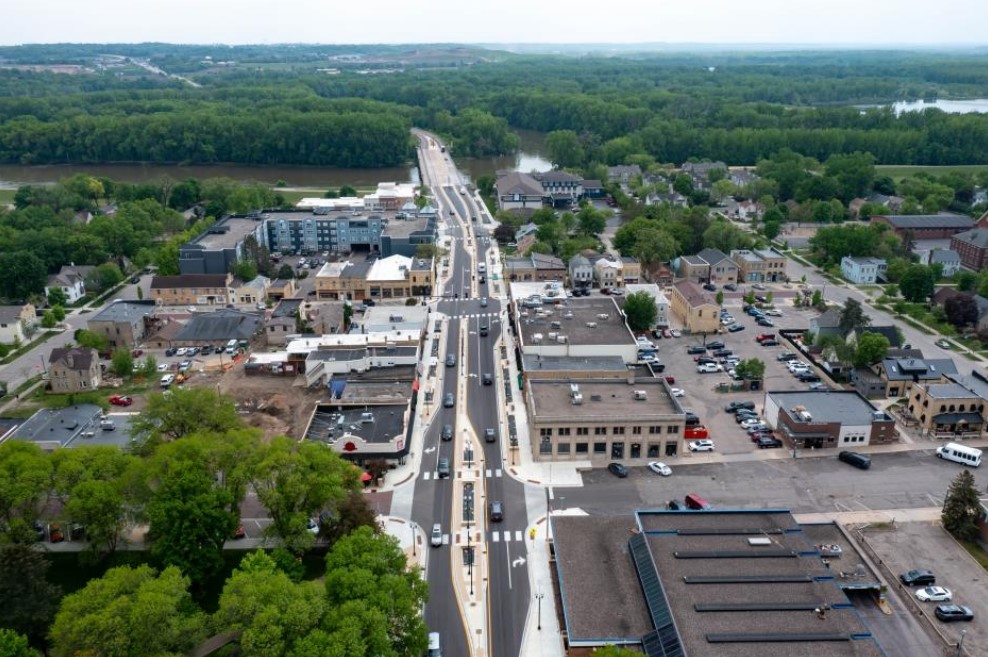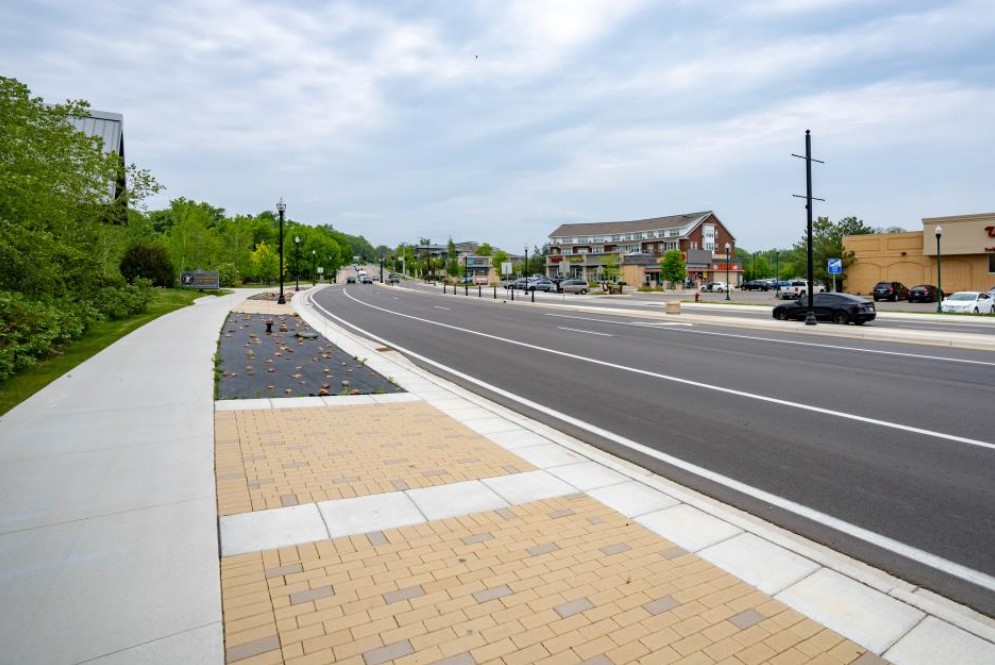Complete Streets in Minnesota communities
Hwy 41 in Chaska

Background
The Highway 41 project in Chaska, Minnesota, began as a simple preservation project by the Minnesota Department of Transportation (MnDOT) but evolved into a comprehensive Complete Streets transformation. The project's scope expanded when the City of Chaska took the lead, with MnDOT contributing preservation funds and additional support. As the project grew, it faced several significant challenges. Funding became a major hurdle as the scope expanded beyond initial expectations, requiring creative solutions and partnerships. The team had to balance the diverse needs of people walking, biking, local business owners and freight haulers. Engineering challenges arose when fitting an underpass on either side of Highway 41, and parts of the trail system needed relocation due to flood plain concerns. Despite these obstacles, the project team's collaborative approach and innovative problem-solving led to successful outcomes.
Complete Streets elements
Active Transportation Improvements
The project significantly enhanced active transportation options in Chaska. The redesigned roadway through downtown now features streetscaping, better connections for people walking and biking, and gathering spaces to fostering a more pedestrian-friendly environment. To further prioritize pedestrian access, parking was strategically relocated, creating a more welcoming main street atmosphere.
The project also integrated with the South West LRT Regional trail system, relocating parts of the trail to address flood plain concerns. Crosswalks were improved to increase safety and ease of use. Pedestrian accessibility was also improved through the addition of new ramps and upgrades to meet ADA standards.
Vehicular Traffic Management
To improve traffic flow and safety, several vehicular management strategies were implemented. Short turn lanes were added at key points along the route. Two new signals were installed at 2nd and 4th Streets, improving traffic control at these intersections. Left turn lanes were incorporated at traffic signals, enhancing safety and reducing congestion for turning vehicles.
The project team recognized the importance of freight traffic to the local economy and made specific improvements to address these needs. Overall reliability for freight traffic was improved through strategic road design and traffic flow enhancements. Special consideration was given to the needs of the local aggregate industry to ensure that the renovated roadway could efficiently and safely meet their needs.
Before and after
Before

After

Complete Streets themes
Community Engagement and Collaboration
The project team conducted over 120 meetings with stakeholders, including businesses and environmental groups. This extensive outreach effort won the 2017 American Planning Association (APA)-MN chapter award for community engagement. The success of this project is rooted in the strong partnerships, flexible design, and a collaborative approach that allowed each agency time to understand and vet potential improvements, to consider the compromises, and test multiple options.
The success of this project highlighted several key lessons in community engagement and collaboration. First, the team learned that open and frequent communication with all stakeholders was crucial in building trust and finding innovative solutions. They discovered that by involving the community early and often, they could address concerns proactively and incorporate local knowledge into the design process. The project also demonstrated the value of flexibility; as community needs became clearer through engagement, the team was able to adapt the project scope and design accordingly. Perhaps most importantly, the collaboration between MnDOT, the City of Chaska, and Carver County proved that partnerships can lead to outcomes that surpass what any single entity could achieve alone. This collaborative spirit allowed the team to leverage diverse expertise, combine funding sources creatively, and ultimately deliver a project that truly served the community's needs.
Results
- Economic vitality: The city is experiencing an uptick in business activity following the project's completion.
- Improved safety: Enhanced pedestrian infrastructure and traffic calming measures have increased safety for all users.
- Better connectivity: The project improved regional connectivity, considering Highway 41's role as a river crossing and arterial route.
- Freight efficiency: Additional turn lanes and signals have improved reliability for freight transport.
